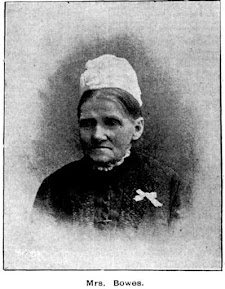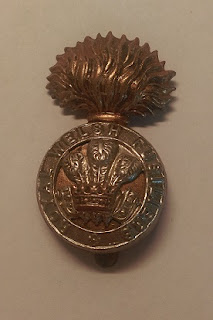A victim of war as we remember the ending of WW2
I couldn't let the 80th anniversary of VP day which meant an end to WW2 go past without a blog!
I was meaning to write this one up a few days back but well I wasn't feeling up to it but as today appears to be a good day here it is!
Memories used to come flooding back to my mother about the 15th August 1945 when the girls and her dropped all the hats they were working on at Normoyle's in the CBD and raced into the packed Sydney streets for hours of merriment.
But although there was joy there was sadness for those that lost their lives in the wilds of Papua New Guinea - where my father fought the whole five years - and in other Asian areas including Singapore.
Today I wish to honour the following young man who lost his life in the Sandakan death camp.
ROBERT CHARLES PURVIS
Robert was the eldest son of Charles Allen Purvis and his wife Sylvania of Alexandria and was born in 1914 and we know he was one of over 2000 Allied prisoners of war (POW) held in the Sandakan POW Camp in North Borneo.
Army photo of Robert Charles Purvis - AWM
After a large-scale military success during WW2, the Japanese forces had captured large numbers of Allied soldiers as POW and distributed them to various lock-up facilities.
Australian prisoners, as part of the B Force numbering 1494, were transported from Changi Prison on the 7th of July 1942 on board the ship Ubi Maru, arriving in Sandakan Harbour on the 18th of July 1942 and sent there to build an airstrip. At first, they were treated reasonably well but gradually rations were reduced and assaults increased.The camp was secured by barbed wire to prevent escapes. In front of the guard's office stood a large wooden cage similar to a dog's cage used as punishment and placement in it was for 30 days. Toilet usage was limited to twice a day. Ill treatment by shock and water torture was frequent. The prisoners were also defenceless against the mosquitoes with many succumbing to malaria.
Later another 770 British and 500 Australian soldiers were sent to the camp and by 1943 over 2500 POW's were located at the camp.
In October 1944, when the Japanese increasingly became defensive toward the end of the war, the airfield in Sandakan came under constant heaving bombing by the Allied Forces.
Later that year with Allied Forces advancing towards Borneo, the Japanese decided to send about 2000 of the prisoners westward to Ranau, in Borneo's rugged interior. Weak and sick prisoners staggered for around 260 kilometres along jungle tracks with many dying along the way, their bodies never being recovered. Those unable to continue were killed, those too weak to march had been left behind in Sandakan where all died or were killed. only 6 - all Australians - out about 1000 sent to Ranau survived the war.
Map of Sandakan Death March - AWM
The Sandakan @death march remains the greatest single atrocity committed against Australians in war.
By January 1945, the Japanese finally decided to close the POW camp. Over 500 prisoners were forced to march to Ranau and then the camp was set on fire. Almost all records about the site were destroyed. Other prisoners were marched into the jungle where they were shot by the Japanese guards.
On the 10th June 1945 - 30 prisoners had died in the meantime - one of them being Gunner Robert Charles Purvis aged 31 who died on the 4th June - and a final group march of 75 of prisoners toward Ranau was set in motion. The remaining prisoners who were stranded on the burned area of the camp either died of malnutrition and disease or were killed.
Memorial of those that perished in Sandakan Camp at the AWM - AWM
The leaders responsible for managing the camp were Captain Takakuwa and Hoshijuma Susumi who, as a military engineer was given the task for establishing the military airfield. His greeting to the prisoners in April 1943 were as follows -
"You will work until your bones rot under the tropical sun of Borneo. You will work for the Emperor. If any of you escape, I will pick out 3 or 4 and shoot them. The war will last for 100 years."
Both men were brought to the Labuan War Crimes Trails, found guilty and sentenced to death by hanging on the 6th April 1946 in Rabaul, Papua New Guinea.
Gunner Robert Charles Purvis is remembered on his grandparents grave in the Old Anglican area in the Cemetery. I'm sorry I don't have a photograph He is commemorated at the Labuan Memorial in Malaysia.
Sandakan Memorial - courtesy of Borneo on line
At the going down of the sun we will remember them.
Although we remember their sacrifice I am pleased we have been able to move forward with forgiveness but I'm afraid we do not seem to remember the horrors of war as we are confronted with them daily with no end in sight.
For today's blog I have referenced, ancestry,com.au; the AWM website; Wikipedia and AWM files with photos from AWM, CWGC and Borneo online.
If you or your parents conveyed to you the joy of the end of WW2 or if you had a relative who was a POW at Sandakan or any other during WW2, please add to the comments. If unable to do so please click onto the following page below and add your comment there.
http://rookwood cemetery discoveries. blogspot.com
I'm unable to say when I will be blogging on this page again but when I'm feeling well enough I will consult my mountain of notes and add another Rookwood gem for you.
Until next time







Comments
Post a Comment